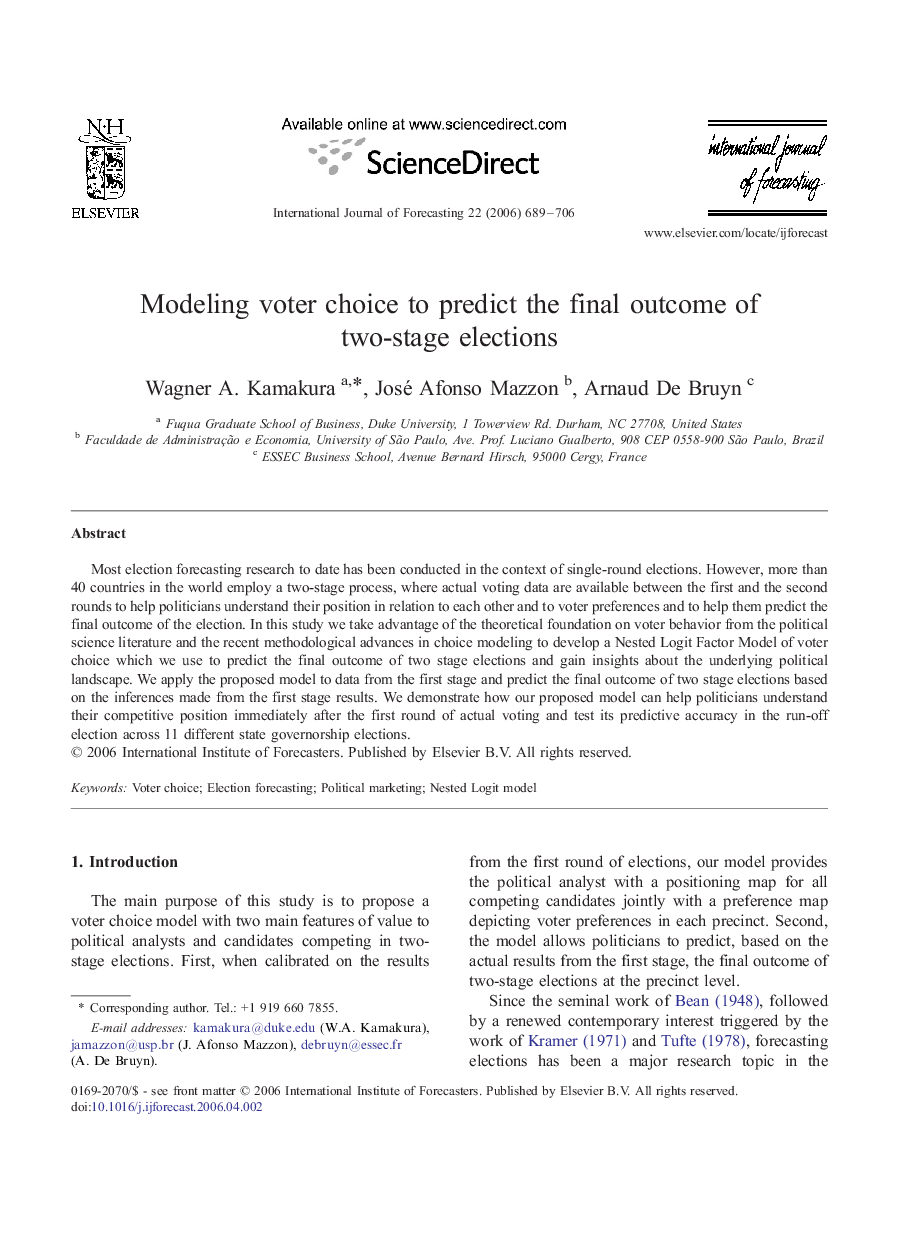| Article ID | Journal | Published Year | Pages | File Type |
|---|---|---|---|---|
| 998542 | International Journal of Forecasting | 2006 | 18 Pages |
Most election forecasting research to date has been conducted in the context of single-round elections. However, more than 40 countries in the world employ a two-stage process, where actual voting data are available between the first and the second rounds to help politicians understand their position in relation to each other and to voter preferences and to help them predict the final outcome of the election. In this study we take advantage of the theoretical foundation on voter behavior from the political science literature and the recent methodological advances in choice modeling to develop a Nested Logit Factor Model of voter choice which we use to predict the final outcome of two stage elections and gain insights about the underlying political landscape. We apply the proposed model to data from the first stage and predict the final outcome of two stage elections based on the inferences made from the first stage results. We demonstrate how our proposed model can help politicians understand their competitive position immediately after the first round of actual voting and test its predictive accuracy in the run-off election across 11 different state governorship elections.
